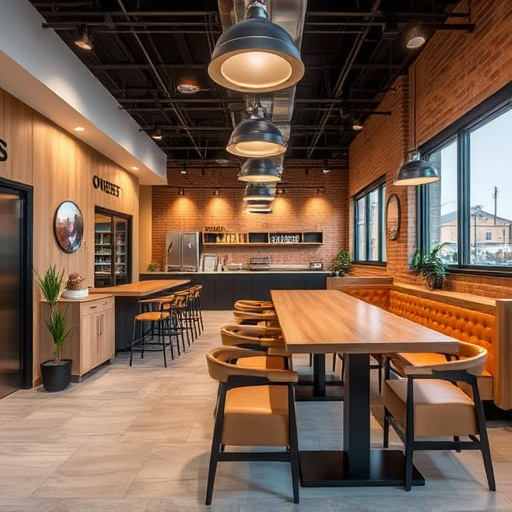A successful commercial upgrade requires strategic planning, efficient project management, and comprehensive assessments. By identifying renovation needs, setting defined goals, timelines, and budgets, businesses can minimize downtime and disruptions. Engaging professionals, fostering open communication, and proactively addressing challenges ensure a smooth transition, aligning vision, and maximizing productivity throughout the upgrade process.
Minimizing downtime during a commercial upgrade is crucial for maintaining business continuity and ensuring minimal disruption to operations. This comprehensive guide outlines a strategic approach to navigate the complex process of upgrading your commercial infrastructure seamlessly. From initial planning and assessment to execution, communication, and post-upgrade monitoring, we provide actionable insights. Discover how to set realistic goals, develop a robust plan, implement phased strategies, and continuously optimize your system for peak performance post-upgrade, all while keeping downtime to a minimum.
Planning and Strategy

A well-executed planning phase is the cornerstone of minimizing downtime during a commercial upgrade. Businesses should begin by assessing their current space and identifying areas that require attention, whether it’s an outdated exterior painting job, a kitchen remodel, or other customized work. Creating a detailed project plan involves setting clear goals, timelines, and budget constraints.
Engaging experienced project managers and contractors who specialize in commercial renovations can ensure a smooth process. Regular communication and collaboration between all parties involved are vital to stay aligned with the vision, avoid delays, and promptly address any challenges that arise during the upgrade.
– Assessing Upgrade Scope and Impact

Before diving into a commercial upgrade, it’s crucial to conduct a thorough assessment of the scope and potential impact. This involves understanding the entire process—from identifying necessary changes to predicting challenges and disruptions. By evaluating every aspect, from structural alterations to technology upgrades, businesses can anticipate issues like downtime, budget requirements, and project timelines.
This initial phase is akin to laying the groundwork for a successful home transformation or home remodeling project. It ensures that the upgrade aligns with business goals without causing unnecessary setbacks. A well-planned strategy, tailored to the unique needs of the establishment, enables smoother transitions, minimizing downtime and maximizing productivity during the commercial upgrade process.
– Setting Realistic Goals and Timelines

Setting realistic goals is a cornerstone when planning a commercial upgrade to minimize downtime. It’s crucial to define specific, achievable objectives and set appropriate timelines for each phase of the project. This involves understanding the scope of work, resource availability, potential unforeseen challenges, and stakeholder expectations. For instance, instead of aiming for a complete transformation within a week—which is unrealistic for most commercial upgrades—break down the project into manageable tasks with realistic deadlines. A well-structured timeline ensures that every aspect of the upgrade receives adequate attention without causing excessive disruptions to business operations.
Consider the ripple effect of each phase on the overall process. For example, delays in securing permits might impact when construction can begin, affecting subsequent stages like interior painting or bathroom renovations. By acknowledging these dependencies and setting flexible yet firm deadlines, you can better navigate potential setbacks. This proactive approach ensures that while aiming for excellence in your commercial upgrade, you minimize downtime and keep operations running as smoothly as possible.
Minimizing downtime during a commercial upgrade is achievable through strategic planning. By meticulously assessing the scope and potential impact, along with setting realistic goals and timelines, businesses can ensure a smooth transition. This proactive approach allows for efficient resource allocation, minimizes disruptions to operations, and ultimately facilitates a successful commercial upgrade process.














